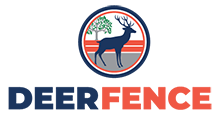Deer Disease In California
Posted on August 04 2020
A rare disease that can kill thousands of fawns in a single outbreak has been confirmed in Northern California, and wildlife officials are pleading with rural property owners to not feed deer or put out water for them.
On Monday, biologists at the Department of Fish of Wildlife announced deer in Napa, Santa Clara, Sonoma, Tehama and Yolo counties had died from an outbreak of adenovirus hemorrhagic disease.
The virus causes several nasty ailments in deer ranging from internal bleeding and organ failure to painful sores and swelling in the gastrointestinal tract. Sick animals may have excessive salivation such as drooling or foaming at the mouth, diarrhea, regurgitation or seizures. They often seek water, so ones that die from the disease are often found nearby, biologists say.
Fawns and young animals are the most likely to die. The last large outbreak in California was in 1993 and 1994, when thousands grew sick and died in 17 California counties.
Because deer can share the virus through congregating at feeding sites and water troughs, wildlife officials urged Californians to follow the state’s prohibition on feeding wildlife.
“Providing attractants for deer – food, salt licks or even water – is against the law for good reason,” Brandon Munk, a wildlife veterinarian at the Department of Fish and Wildlife, said in a news release. “Because these artificial attractants can congregate animals and promote the spread of disease, it’s particularly imperative to leave wildlife alone during an outbreak.”
Those caught feeding deer face misdemeanor charges, with potential penalties of fines and jail time.
State officials urge anyone who sees a sick deer or one that has died from unknown causes, to report it via the department’s online mortality reporting system.
Re-posted from The Sacramento Bee. Written by RYAN SABALOW
